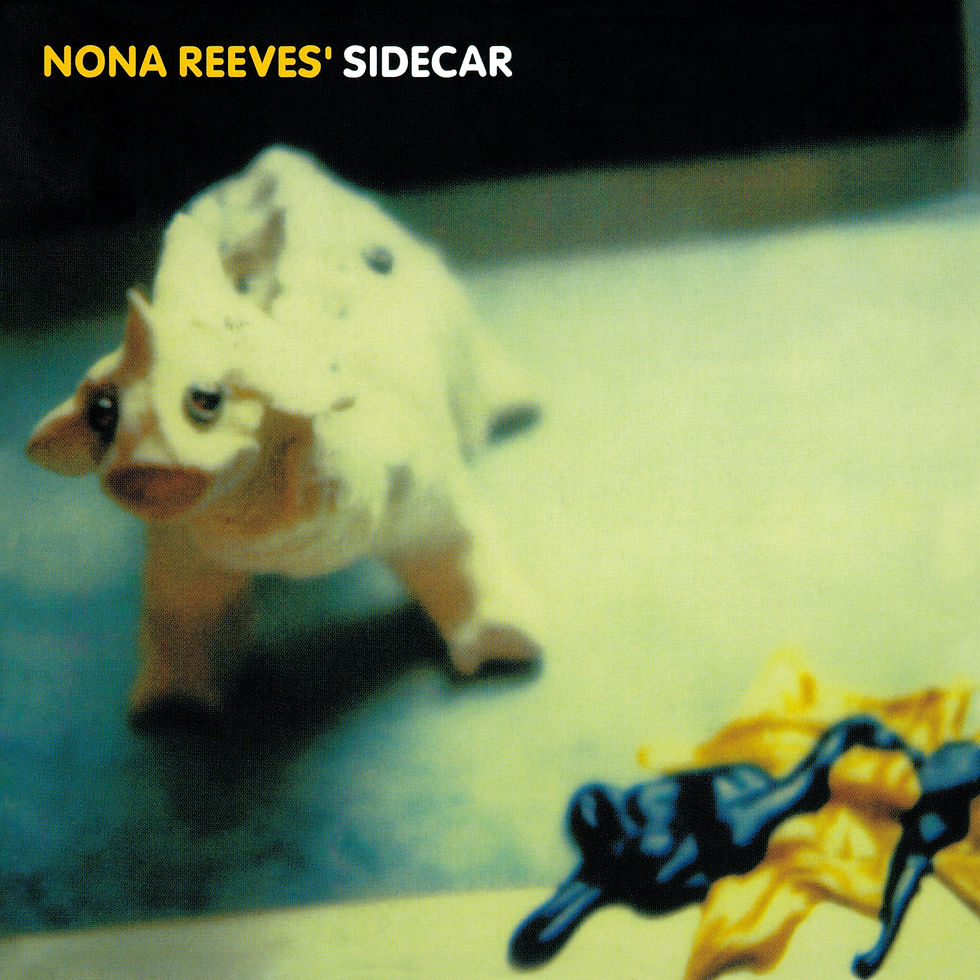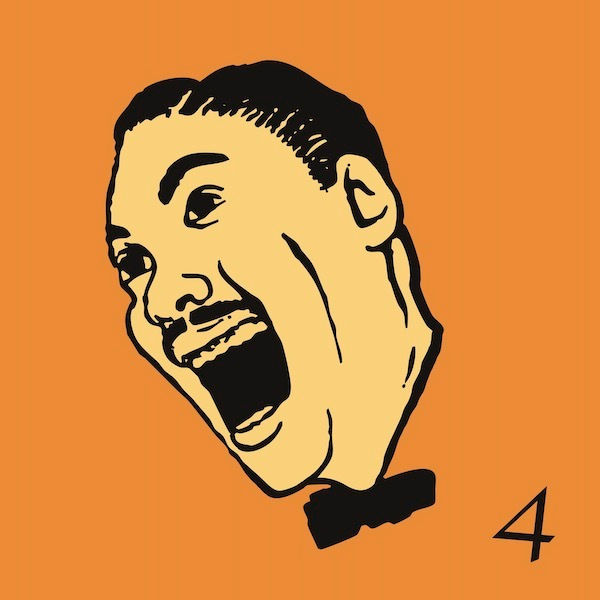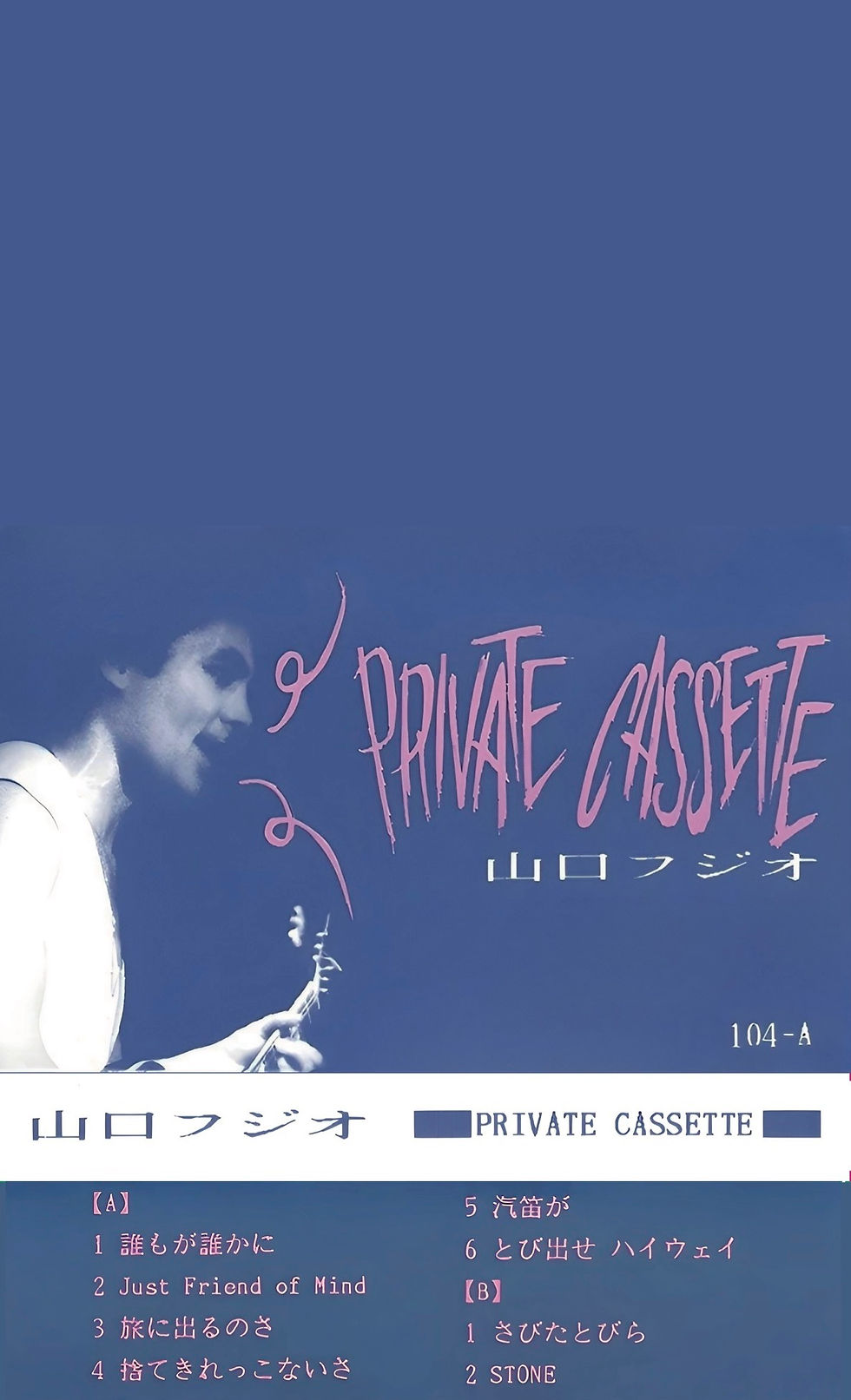[Description]
MIZUTANI / Les Rallizes Dénudés, which focuses on static aspects with acoustic sound, is the first LP and long-awaited official release!
★As a "Tuff Beats Online Store original benefit", a set of 2 square postcards (3 types in total) will be included.
Note:
Please note that this product is available for purchase only to customers residing in Japan and the Asia region. please read the description on the right side of this page.
MIZUTANI / Les Rallizes Dénudés, which bears the name of Naked Rallize's Takashi Mizutani himself, has been re-released with remastering by former participating member Makoto Kubota! Acoustic and introspective, the core of Les Rallizes Dénudés, Mizutani's important work gives you a glimpse of that side. <Jacket with obi>
Due to recording time constraints, the last song on the CD, “Other Fallin’ Love With”, was cut from the analog LP.
As a result, this record is composed only of unique sound sources in the history of Rallizes, created by Takashi Mizutani and Makoto Kubota when they met in Kyoto in 1970.
The cut “Romance of Black Sadness Otherwise Fallin’ Love With” was combined with two bonus tracks from the reissue CD of ’67-’69 STUDIO et LIVE to create a 12-inch recording. It will be sold as an accessory to the simultaneous purchase set of 3 LP titles that will be reissued this time.
----------------------------------
[Explanation of MIZUTANI / Les Rallizes Dénudés by Shinya Matsuyama]
This work is one of the three Les Rallizes Dénudés works that were released in limited quantities on the Revista label in 1991. The Revista edition, in which Takashi Mizutani himself was involved in song selection and mastering, is the only official album under the Rally's name, but each edition is limited to press (1000 copies for '77 Live', '67-'69 Studio et Live, and MIZUTANI / Les Rallizes Dénudés, was released in 500 copies) and disappeared from the market in an instant. Since then, they have commanded extremely high prices on the second-hand market, and pirated recordings have been circulating all over the world.
After 31 years, this reissue, remastered by Makoto Kubota, who was also a member of Les Rallizes Dénudés for a time, is sure to receive applause from fans around the world.
Last October (2021), with the announcement of Takashi Mizutani's death (December 2019) and the opening of the first official website, "Les Rallizes Dénudés Reproduction/Excavation Project" started, and the label "The Last One Musique" was launched by people involved with Rallizes. The website states "We are the only label in the world that holds the legal rights to the Les Rallizes Dénudés recordings, and with more vivid sound and precise production than the pirated records that have been circulating for over 20 years, we have released Takashi Mizutani's recordings. The label's purpose is clearly stated as "to provide music".
Last April, a US label released the 2-disc album THE OZ TAPES, which is a compilation of recordings (including unreleased recordings) from the omnibus album OZ DAYS LIVE (1973).
It can be said that the reissue of the three Rivista sound sources (CD and LP), which was controlled in every aspect by "The Last One Musique" is the true start of the project.
Only 500 copies of the original edition in 1991 were pressed, and the content is different from the general image/perception of the Les Rallizes Dénudés sound, so it may be overshadowed by fans, but the book This work is one of the most important of all Rallizes sound sources, including pirate sound sources. That's what I've been thinking ever since it was released. Of course, I also think that the joy brought by the roaring guitar sound full of feedback noise and the overly reverbed vocals that seem to echo from the underworld is a special magic that can only be found in Larrizes. But definitely not Rallizes = roars. It is not acceptable to talk about Rallizes only through the roar. On the other side of the violent and destructive roar, there is always a wavering of cool and sweet lyricism and eroticism, and in fact, this is where the essence of Rallizes or Takashi Mizutani lies, and if you can't sense that, then Rallizes /Mizutani I cannot understand the true awesomeness of this noble cruelty, hopeless emptiness. That is my firm view of Rarrizes, having experienced many live performances since the 1970s and listened to a huge amount of recordings, including pirated recordings.
Anyone who has seen it live will remember it. Even after the start time, Mizutani did not appear on stage, and the audience was forced to wait for two or three hours. In the dimly lit venue, where the lights of the mirror ball sparkle and the background music of cool jazz such as a modern jazz quartet plays quietly, the guests wait patiently and quietly. But I wasn't in any pain. I knew that live perfomance had already begun as I continued to immerse myself in solitude in this dark and cold space. Because I thought that the depth of loneliness contained in that silence suspended in the air was the essence of Rallizes /Mizutani. He wasn't just postponing the start of the show out of selfishness or whim, but he was offering us the waiting time, where we don't know how long it would last, the emptiness and anxiety that has been left behind, as a sweet overture that is inextricably linked to the explosion. I think so. According to what Makoto Kubota heard from Mizutani's relatives, Mizutani at home often listend to an organ instrumental version of the theme song for Serge Gainsbourg's film, Je t'aime moi non prue performed by Jean-Pierre Savard at full blast . The ecstasy and agony that drifted through that instrumental version can be said to be the very essence of Gainsbourg, who continued to wander in the void throughout his life, going back and forth between light and darkness, life and death, but I believe that the essence of Takashi Mizutani was also there. I think. And this album is the clearest expression of that.
"I'm tired. I want to play quiet music. Can you help me?" Mizutani is said to have said this to Makoto Kubota, whom he met by chance on the campus of Doshisha University in the fall of 1969. From 1968 to 1969, a storm of student movements raged at universities across Japan, and the members of Les Rallizes Dénudés (formed in November 1967) were also caught in the midst of it. Mizutani is said to have been a black hell (anarchist) type of person, but I am skeptical as to whether he was really interested in student movements. The first time Mizutani met Kubota, who was a member of the light music club, for the first time in a long while, was right after a concert called "Recital No. 2 as Indulgence" held by Rarrizes at the Kyoto Educational Culture Center on October 18, 1969.
This was the last concert of the first generation of Rallizes, and it was also the first time Kubota experienced rock music as an audience member. Kubota has always loved jazz and R&B, and even played bossa nova in the light music club. He was also a home recording enthusiast who enjoyed making ping-pong recordings with two reel-to-reel tape recorders. Kubota started going to Mizutani's apartment around December and started writing songs with Mizutani while playing the guitar. While he was doing this, they decided to try recording a demo tape, and it was recorded in one night in the broadcasting room (as it was called) in the Doshisha University student hall. These are the sound sources for ① to ⑤ of this work. It was around February 1970.
The broadcast room had two monaural tape recorders, a simple mixer, and a microphone. Kubota was familiar with the procedure from recording ping pong at home, so the recording process went smoothly. First, a basic track including vocals was recorded in one shot, and while it was being played back, guitars and other parts were dubbed using another telecoder. Mizutani sang while playing a Yamaha semi-acoustic guitar, while Kubota played a Martin-style acoustic guitar with a soundhole pickup borrowed from Mizutani. Basically, Mizutani was in charge of rhythm guitar and Kubota was in charge of lead guitar, but Kubota played on songs with only one guitar, such as ② "Morning Light", which Mizutani and Kubota co-wrote. At the time, Kubota loved the singer-songwriters/guitarists of the new American folk scene (Richie Heavens, Tim Hardin, Joni Mitchell, etc.), and especially Bruce Langhorne (Bob Dylan's "Mr. He was said to have been strongly influenced by the playing style of "The Tambourine Man".
Regarding Tadao Makino, who participates in the recording as a percussionist, Kubota referred "Mizutani brought him here. He used to put leather or paper over the mouth of the teapot and beat it.'' In terms of mood, I guess he's in a similar position to Steve Took during his Tyrannosaurus Rex days. He also plays the triangle in ④ "Fragment 2", but Kubota plays the glockenspiel in ② "Morning Light" and ⑤ "Crack".
Furthermore, Masaki Konno, who is credited as the lyricist for ③ "Fantasy 1," is said to have been a member of the early Rarrizes in various sources, but to be exact, he is not a member but a friend from the band, and is a friend of Mizutani's. It is said that he was a member of the Doshisha Poetry Study Group. I don't know much about Kazuyuki Tsuka, the lyricist of ④ "Fansho 2", but it is highly likely that he was the one who published a collection of poems called "Message: Kazuyuki Tsuka Collection" from a publisher called Assassin Meirei in 1971.
To be more specific, I wonder if Tsuka and his group were actually Takashi Mizutani himself... (If that's the case, is "Tsuka" taken from Kunio Tsukamoto, a poet and chanson critic?) There is. The series of surreal words that begin with "The aurora is the smoke of a cigarette..." feels like the worldview of Mizutani, who was well versed in French literature, especially turn-of-the-century Symbolism.
Mizutani, Kubota, and Makino continued to work together for a while after this recording and performed live two or three times in 1970. One of the first sound sources is ⑥ “The Last One _1970” on this album. According to Kubota's recollection, this was a student-sponsored concert held at Doshisha University in May 1970 to welcome new students, and they performed together with Masato Minami and Kenji Endo. The following year, in 1971, Mizutani participated in the recording of Minami Masato's album "Regression Line", and this concert may have been the two's first encounter.
The performance in ⑥ also started with Mizutani on rhythm guitar and vocals, and Kubota on lead guitar, but midway through, Mizutani suddenly stepped on the fuzz and switched to lead guitar. This is a performance unique to Rarrizes during this period of transition. Although this song continued to be played as a representative number by Rarrizes for many years after that, the structure and sound changed over time, so much so that it could be said to be a different song with the same name. Perhaps that's why this reissue intentionally adds "_1970" to the end of the song title. I would like you to listen and compare it with "The Last One" included in "'67-'69 Studio et Live" and "'77 Live" which will be reissued at the same time.
The trio version of Rallizes with Kubota and Makino later participated in the event "Maruyama Odyssey" held at the Maruyama Open-Air Concert Hall in Kyoto on September 13, 1970 (with performances by Flower Travelin' Band and others), but around this time Mizutani... began to perform with groups such as Charbo and Fujio Yamaguchi (later known as Murahachibu), and on the day of the concert, there was a strange situation in which the Rarrizes and the another Rarrizes with Kubota and others appeared.
Immediately after this concert, in late September, Kubota took a leave of absence from university and went to the United States. After returning to Japan at the end of March 1971, he returned to school and began participating in the New Rallizes (Mikio Osada on bass and Shunichiro Shoda on drums), which Mizutani had reorganized in Tokyo in the fall of 1970. When the "Les Rallizes Dénudés3 Days'' at Shibuya BYG in June 1971 (with daily bands such as Happy End, Masato Minami, Hiro Tsunoda, etc.) and the festival "Shojiko Rock on" in August, he played bass and side guitar at live performances at Kichijoji OZ and other venues, but from 1974 onwards, he became busy with his band "Yuyake Band and left Rallizes.
Kubota's first solo album Machiboke (1973), which was released around the time the Yuyake Band started, also included a self-cover version of the second album Asa no Hikari, which he composed himself.
And, in this reissue, only the main disc ⑦ "Romance of Black Sorrow", which will be included only in the CD version, is not played by a trio with Kubota and Makino, is one played in 1973 live recording (Meiji Gakuin University) by Mizutani, Mikio Nagata, and Shunichiro Shoda and Rallizes first guitarist Takeshi Nakamura (currently photographer Nakamura Yo), who returned as a guitarist in 1972.
The slow guitar rhythm in the intro was later absorbed into "The Last One", which continued to change. Around this time, the Les Rallizes Dénudés sound that many fans had imagined and recognized was nearing completion.
By the way, Nakamura is the only member other than Mizutani whose performances are recorded on all three Revista releases (and OZ DAYS LIVE) that will be reissued this time. In the first place, he was an important figure in creating the birth of the Les Rallizes Dénudés (Nakamura approached Mizutani, a fellow member of the light music club), but he left the band in early 1969 and turned his attention to photography, which he had always loved. I started typing into it. However, even before he returned to Rarrizes as a guitarist in 1972, he maintained his bond with Rarrizes, taking photos of them at live performances. I also visited his photo exhibition held in Kyoto in October 2021, and although most of the works were unrelated to Larrizes, the space was beautifully reminiscent of the world of Larrizes. It also felt like he embodied the essence of Takashi Mizutani mentioned above. I still can't forget the words I heard from Nakamura at that time.
"This is something that has become deeply ingrained in my body. Even if the method of expression is different, I have always had this awareness. And I think that this is something that I have carried with me ever since my time at Rallizes. As someone who was involved in Rallizes, I'm sure everyone was like that. Meeting Mizutani-san was the starting point for everything. Of course, he was humanly charming, but everyone sensed something beyond that, and sublimated it in their own way. I think."
Nakamura left Rallizes again at the end of 1977, and various musicians subsequently joined Rallizes, but Nakamura's words were probably shared by all members. Takashi Mizutani was both an angel and a devil.
July 28, 2022 Shinya MATSUYAMA
Les Rallizes Dénudés / MIZUTANI / Les Rallizes Dénudés [12-inch] TBV-0034
Tracklist
FACE A
1. Memory is far away
2. Morning Light, L’Aube
3. Fragment I
4. Fragment II
5. FissureFACE B
1. The Last One _1970
Product ID
[12-inch]
Catalog number: TBV-0034
Released by The Last One Musique / Tuff Beats
Release date: 2022.12.7The amount of reservation/purchase is limited to one per person.
For you residing outside Asia
This is the Japan/Asia exclusive edition. this is available for purchase for only who reside in Japan and Asia.
If you accidentally make a purchase, we will provide a refund, but please note the following two points:
- We cannot refund any fees related to currency exchange included in the billed amount.
- The refund will be processed at the exchange rate on the day of the refund. Due to the aforementioned fees and rate fluctuations, the refunded amount may differ from the original payment amount.
If you residing out of Asia, we would like to introduce a separate distribution, Temporal Drift ( https://temporaldrift.today/ ), the label distributing all except areas we are in charge of.






![Les Rallizes Dénudés / MIZUTANI / Les Rallizes Dénudés [12-inch] TBV-0034](https://static.wixstatic.com/media/cc0d0b_8206d82ea15f44fd8bb5840a65d7b3ba~mv2.jpg/v1/fill/w_980,h_980,al_c,q_85,usm_0.66_1.00_0.01,enc_avif,quality_auto/cc0d0b_8206d82ea15f44fd8bb5840a65d7b3ba~mv2.jpg)
























